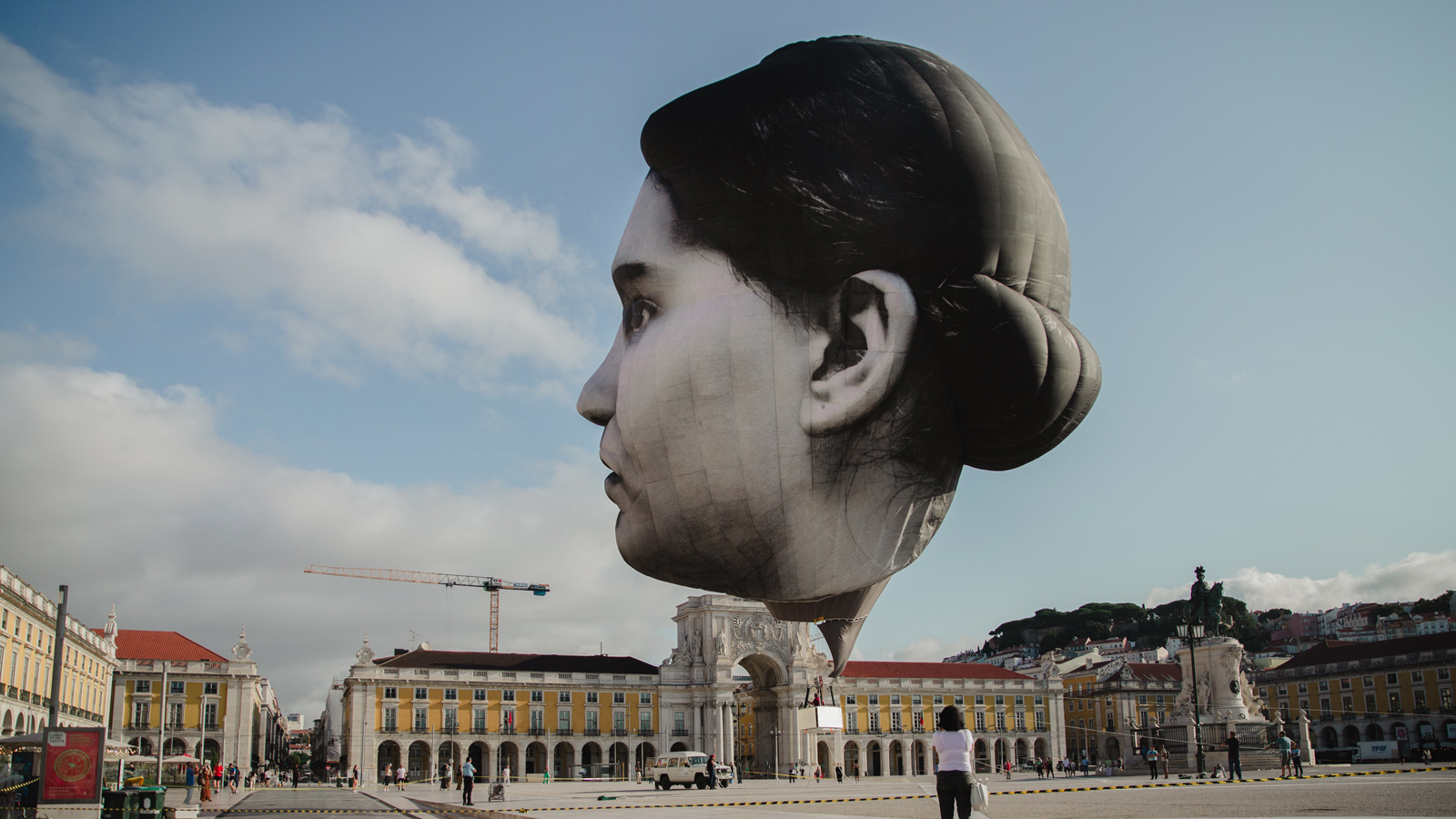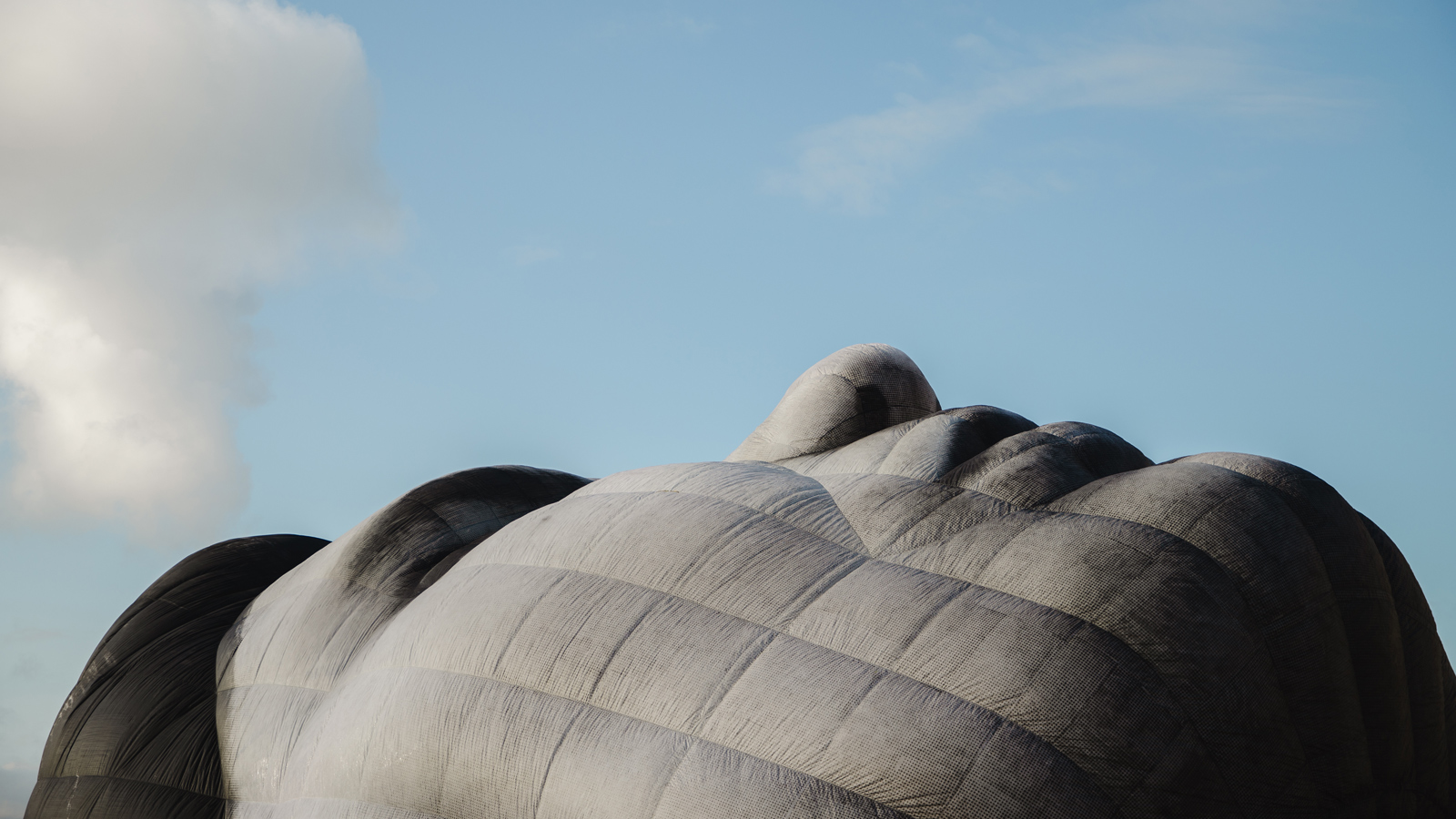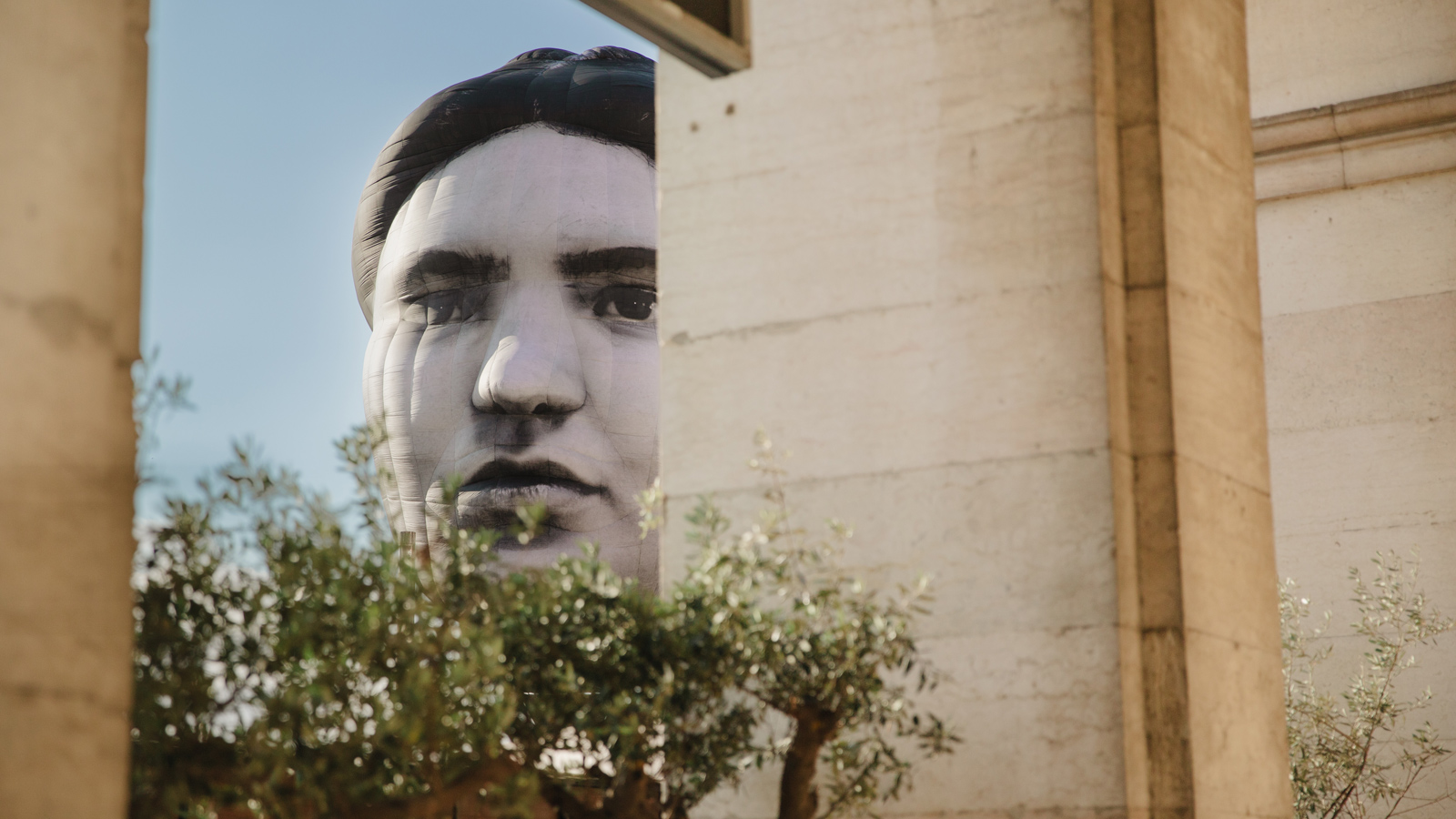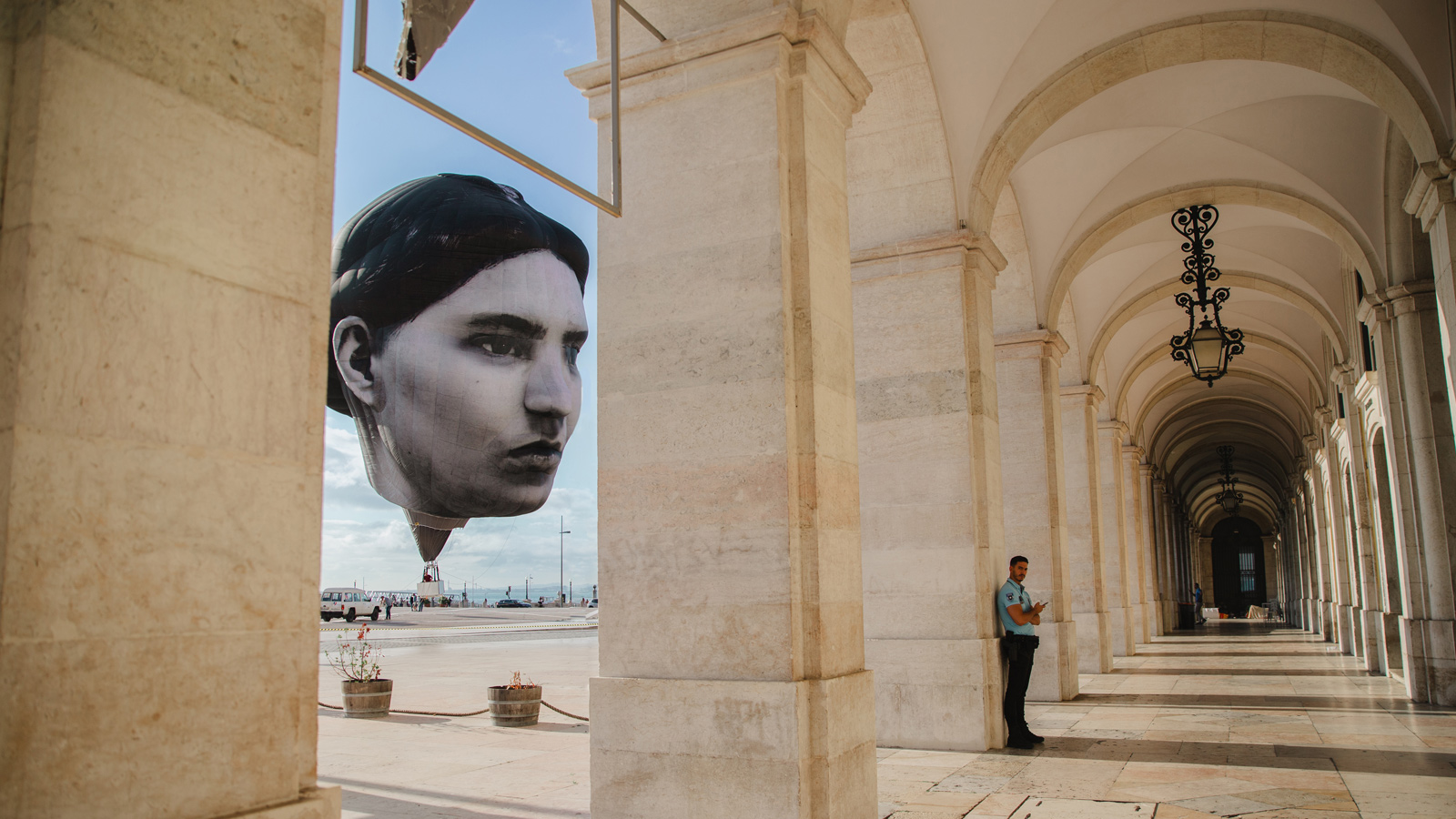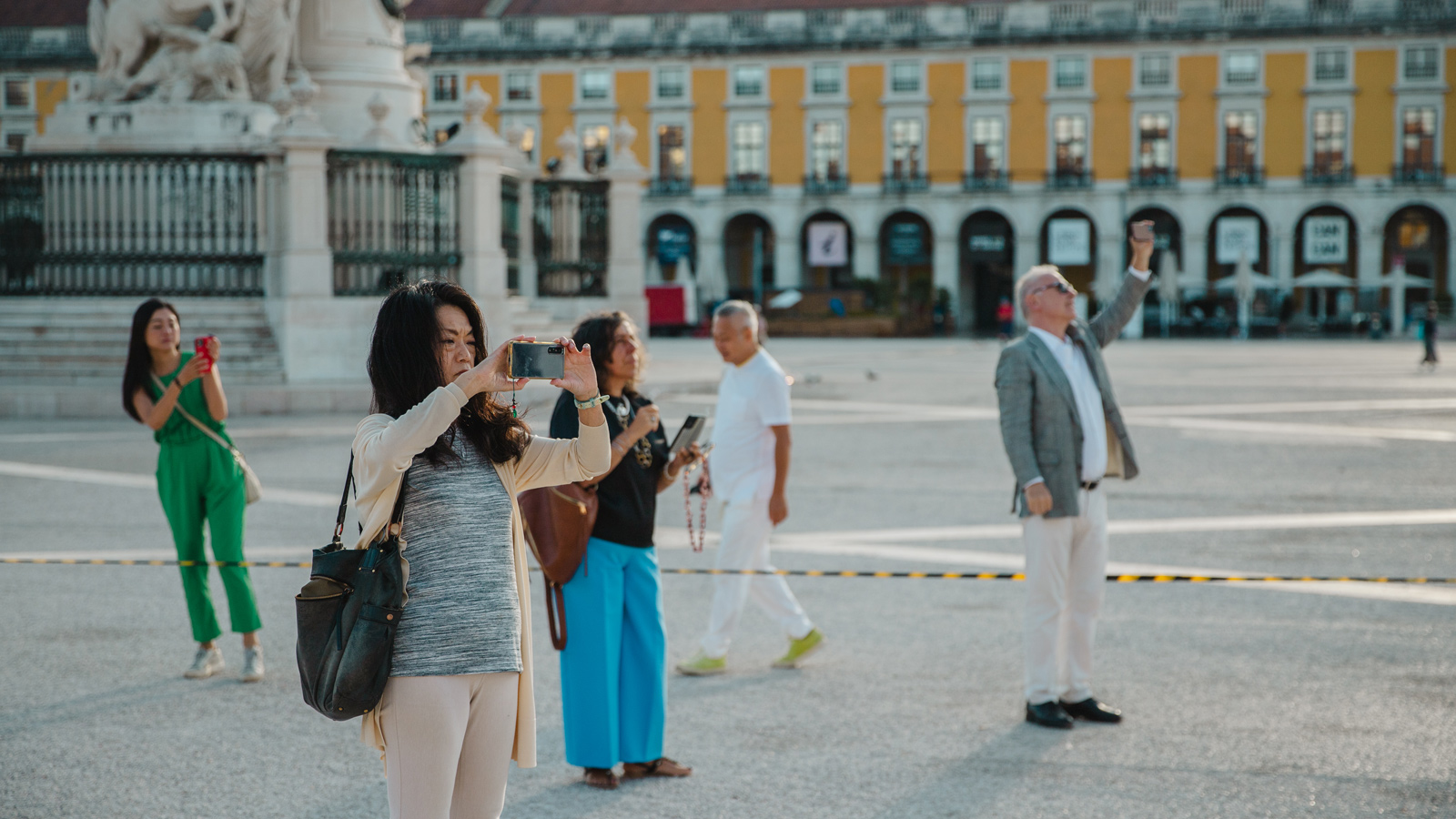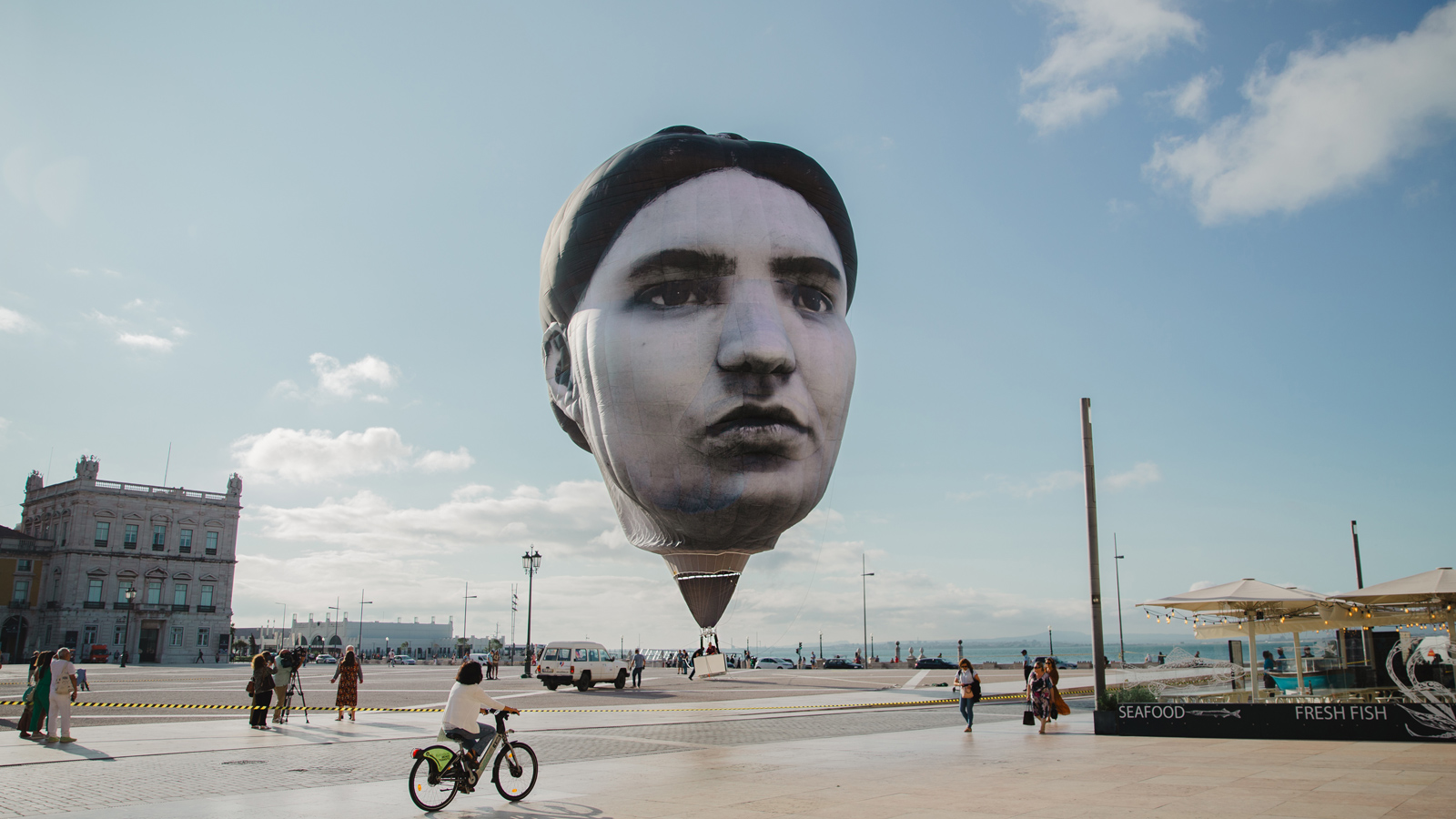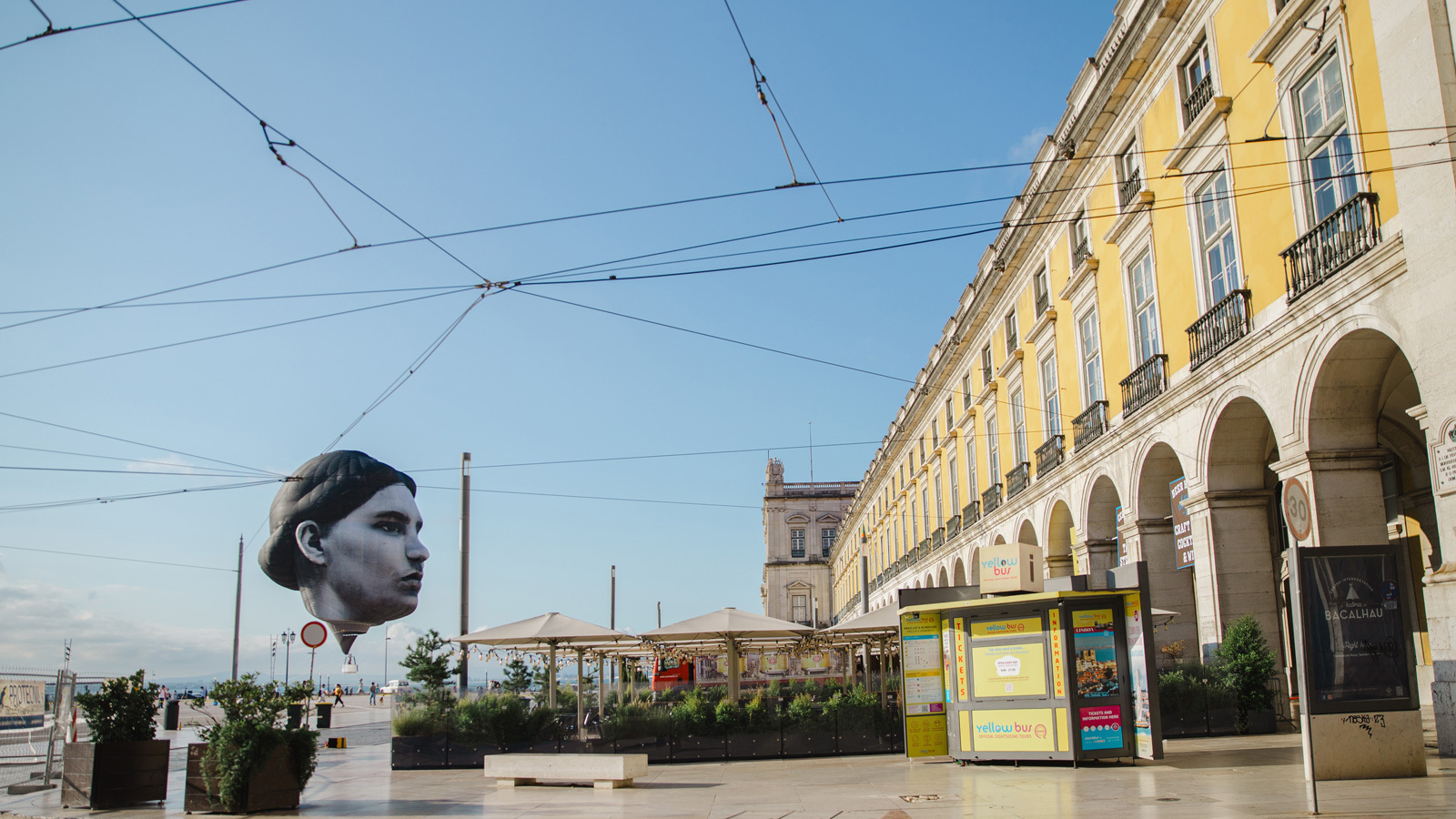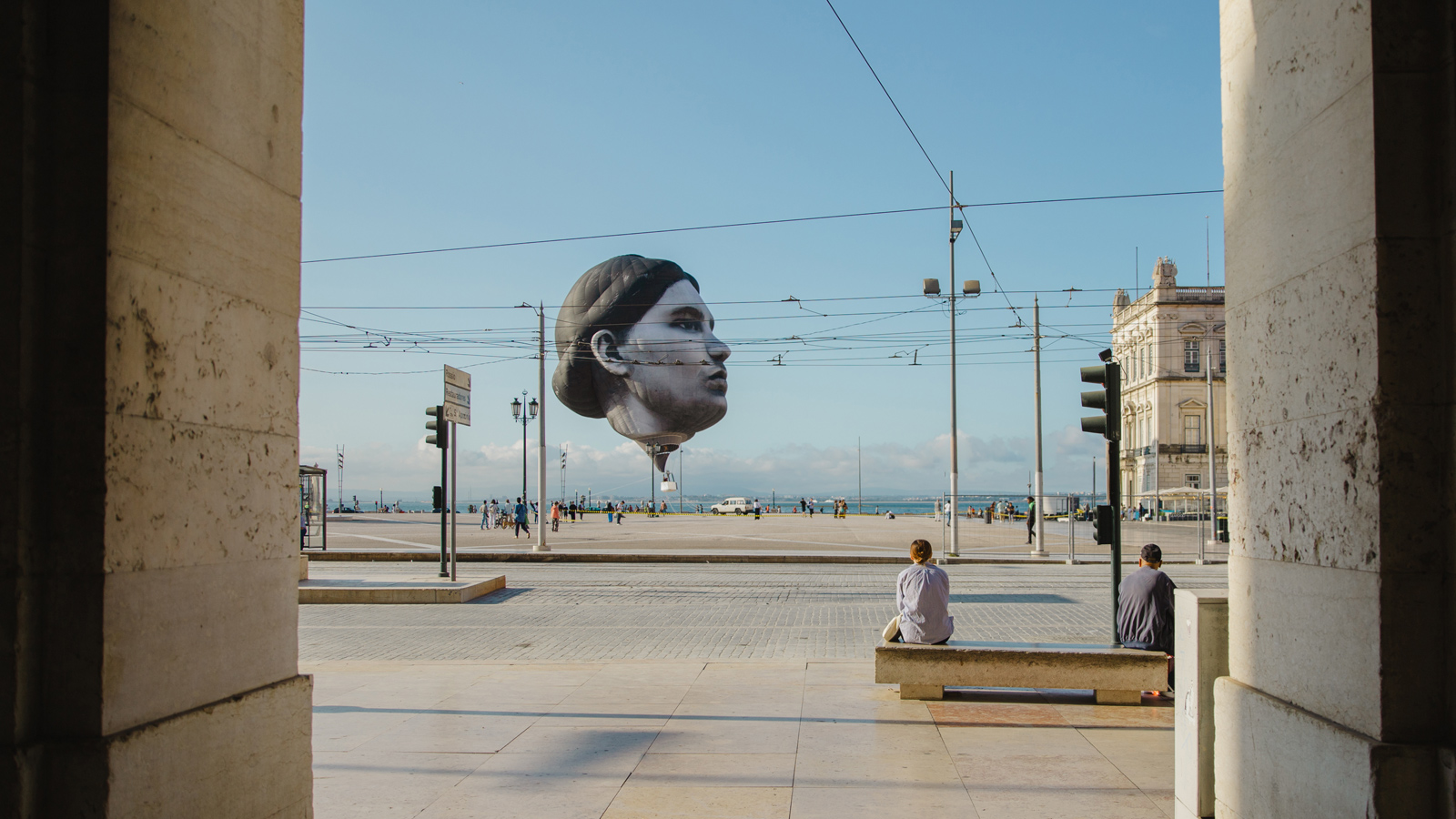The character 縁 [en] of the Japanese word 縁側 [engawa] has a variety of meanings. It can mean ‘frame’ or ‘edge’ or, in everyday use, it can mean ‘encounter’, ‘relationship’ or ‘destiny’. 側 [gawa] means ‘beside’.
The work presented by 目 [mé] comes from a dream that Haruka Kojin, one of the team’s artists, had while she was sleeping, when she was a junior high school student. Since she couldn’t remember the ‘symbol’ which became the key to the piece itself, the team and many staff members collected ‘symbols’ from people all over the world. The ‘symbol’ was chosen during an open meeting with more than 1,400 public participants. This symbol, which could have been anything, is, in every sense of the word, a cohabitation of coincidence and necessity.
When we got off the plane and saw the city of Lisbon, we thought: ‘This is it’.
From the roofs of the houses and the urban landscape, not to mention the light’s beauty, it is rare to find a city with such a scenic topography, with several ups and downs within a short distance, something very important for the piece’s presentation. Within a few days, we were completely fascinated by Lisbon’s food, people, architecture and decoration, as well as the people’s habit of gathering on high places in the evening to watch the sunset and the atmosphere created in the city through this. Considering these factors, what can our piece create in this place? What can come forth from here, with no words nor meanings prepared? We had to keep coming back to these questions.
The preparation for the making of the piece is not easy. First of all, it is essential to choose a central collaborator, the person who will oversee the piece itself on a day-to-day basis. Then, the location, another important factor for the piece which borrows from the cityscape. What are the physical conditions available in Lisbon and what is required to use them? Finding a location that fulfils the conditions for the implementation of the piece is a careful process, just like threading a needle. Sometimes it seems luck plays a large part in the project. The collaborator’s consideration and passion, the memories related to the location that spring up, and even the place’s history, all contribute to the decision on where the piece will be. And this is directly linked to the meaning of the work. It is not something that can be calculated in advance. It is the result of what we gather here suddenly materialising in front of our eyes. And the ultimate factor is the weather on the day. This is something that can’t be controlled, no matter how much you prepare. Nevertheless, it has the greatest impact on the appreciation of the piece. The position and direction of the public’s gaze the moment they encounter the piece, who they are with at the time, and even their emotional state. The mass of ‘en 縁’ [destiny] that encompasses everything, both coincidental and inevitable, will come to fruition in Lisbon this summer.
Contemporary art collective 目 [mé]
